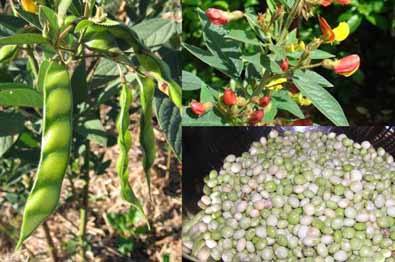Pigeon pea, locally known as “kadyos” is a reliable legume known to grow amidst drought, fixate nitrogen from air to soil, keep the soil compact, and thrive with low farm inputs. As a multipurpose crop, pigeon pea is utilized for human food, animal feed, and fuel wood.
Seeing the potentials of kadyos in enriching the soil, increasing productivity, and alleviating food insecurity, the Central Bicol State University of Agriculture (CBSUA) is conducting a three-year project titled “Pigeon Pea (Cajanuscajan (L) Millisp) Research and Development Project” in collaboration with the Department of Agriculture (DA), local government unit (LGU), and the Bureau of Agricultural Research (BAR).

Most suitable varieties of kadyos in CamSur
The project team led by Dr. Fe Perlas, professor II of CBSUA, established five sites located in CBSUA (Crop Science and Airport Bridge areas), Ocampo, Tigaon, and Pamplona which were planted with six varieties of kadyos, namely ICPL 88039, ICP 87119, ICEAP 00040, ICP 7035, ICEAP 00932, and ICPL 88034.
After evaluating the recorded physiological characteristics and yield parameters, it is found that “of the six varieties tested, ICPL 88034, ICPL 88039, and ICP 7035 performed better over the others…in terms of height, days to maturity, number of branches, and in the yield parameters,” as stated by the proponents.
“After identifying the varieties that are most suitable in our province, these varieties were used in the next study which aimed to determine if pigeon pea can control soil erosion,” explained Ms. Melani Abalayan, study leader and researcher of CBSUA.
Reducing soil loss through kadyos hedgerows
Three study sites in CBSUA (rice-based and vegetable-based) and Pamplona (coconut-based) were established with control treatment (no hedgerows) and two experimental treatments using an early maturing variety (ICPL 88039) and a medium maturing variety (ICP 7035) as hedgerows.
According to the rainfall and soil loss data, the two sites in CBSUA have had more rainfall and number of rainy days causing soil loss than the site in Pamplona.
According to the findings, the highest soil losses and runoffs were found in the control treatments of the three study sites. Meanwhile, the lowest soil losses and runoffs were found in the experimental treatment using ICP 7035 variety as hedgerow.
“After the study, we learned that pigeon pea as hedgerow is effective in controlling soil erosion,” said Ms. Abalayan.
Developing kadyos-based food products
As a food crop, kadyos possesses a nutty, earthy taste and is a major source of protein. It also contains essential nutrients such as calcium, magnesium, phosphorus, potassium, selenium, iron, copper, manganese, zinc, Vitamin A, Vitamin B6, niacin, thiamin, riboflavin, folate, and pantothenic acid.
Cognizant to its rich nutritive value, CBSUA is developing various food products utilizing kadyos. These are: pigeon pea coffee with stevia, flour, cookies, polvoron, pandesal, pretzels, empanada with sprouted pigeon pea seeds, puto, banana cake, milk, and taho.
During the documentation conducted by BAR and FARM Foundation, through its tv program, Mag-Agri Tayo, a cooking demonstration of puto and banana cake was performed by Ms. Melchora Abonal, study leader and researcher of CBSUA.
Standardization processes such as consumer acceptability, shelf-life stability, packaging, and marketability are being conducted to further develop and improve these food products.
Promoting the potentials of kadyos
“The problem is that farmers lack information on how to plant and process pigeon pea. The farmers said that they need trainings or seminars about cultural management practices and about the proper rearing of pigeon pea from planting to harvesting,” said Ms. Ma. Teresa Lirag, study leader and researcher of CBSUA.
Three hundred eighty-seven farmers in fourteen municipalities of Camarines Sur were surveyed about their knowledge of kadyos and 91 percent or 348 farmers said that they are familiar with kadyos as a source of food.
“Here in the university, we are producing various IEC materials on pigeon pea. Currently, we are making a production guide on pigeon pea,” said Ms. Lirag. “As of now, we are more into promotions and information dissemination [activities]. We want to share to the farmers what our findings are so that they will become more interested in pigeon pea farming.” ### (Leila Denisse Padilla, DA-BAR)
———-
Contact Person:
Dr. Fe Perlas
Professor, CBSUA
CP: 09213851164
Email: [email protected]
Source and image: bar.gov.ph

